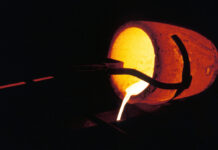
ANGLOGOLD Ashanti’s surprise $2.5bn swoop on UK-listed gold miner Centamin ushers in a new phase for Alberto Calderon, who marks his third year as CEO of AngloGold this month. He has flown the flag for a conservative, cost-cutting strategy of existing assets, but it’s probably safe to assume that approach has reached its limits.
Centamin owns about 80% of Sukari, a mine in Egypt that is scoped to produce about 470,000 ounces this year (the other 20% is owned by the Egyptian government). That production will make AngloGold a three million ounce a year gold firm — establishing it as the fourth largest in the world — and give it freer rein to sell the less competitive mines.
These are most likely to include Sunrise Dam in Australia, as well as Serra Grande and the Cuiabá and Córrego do Sítio mining complexes in Brazil, which have been troublesome to operate.
“We believe this transaction could be transformative for AngloGold, as it brings in a large portion of lower-cost tier 1 production, which could essentially displace AngloGold’s higher-cost tier 2 production,” says Arnold van Graan, an analyst for Nedbank CIB.
Selling these mines would let AngloGold extend the aggregate resource life and would give it growth. The existing Sukari mine is not “geologically constrained”, as Calderon puts it, while a satellite deposit called Little Sukari offers medium-term growth.
But there’s also exploration potential. Sukari is on the Arabian-Nubian Shield, a relatively unexplored mineral belt that cuts through Egypt, Sudan and Ethiopia. Barrick recently touched down in the area when the Egyptian government sold exploration tenements after liberalising its mining code.
The market, though, is showing caution. The share price response to the Centamin transaction was muted. Van Graan, who declares himself “not a fan of mergers & acquisitions”, remarks that AngloGold has played its chips right at the top of the gold market. (The gold price touched a record above $2,500/oz in the week AngloGold announced its deal.)
Calderon’s view is that the premium paid by AngloGold for Centamin, roughly 37% above the 30-day average price, does not represent a “play on the gold price” as AngloGold is paying in shares, which are 45% higher year to date. In his view, AngloGold has capitalised on its rerating, partly a function of tackling its previously high cash cost average.
Still, AngloGold will have to act speedily on portfolio adjustments if it is to benefit fully, assuming the gold price at these levels is unsustainably high. “Though we like the deal, we do still caution that there could be pricing risk in this transaction,” says Van Graan.
“A sharp correction in the gold price — which remains our view — could take some shine off these positive deal metrics.”
This article first appeared in the Financial Mail.











